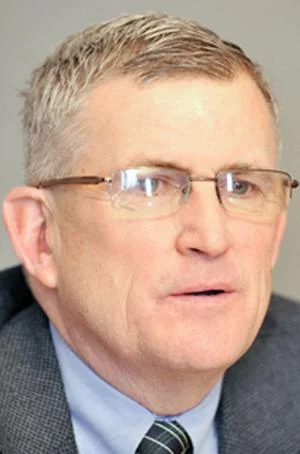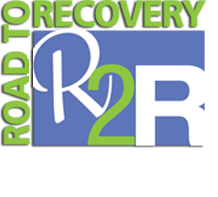JOHNSTOWN, Pa. – A bruise, a scar, a broken bone, a normally outgoing child who has become withdrawn, anger and confusion – all can be signs of child abuse.
Mandated reporters – teachers, law enforcement officers, medical personnel, coaches and so on – know what to look for, but neighbors, friends, family members and other untrained individuals can be on the lookout, too, advocates say.

If abuse is suspected, the response should be to inform the police or an organization that supports children, such as ChildLine, which can be contacted at 1-800-932-0313.
Nina Licastro, Circle of Support Child Advocacy Center’s outreach and development coordinator, said taking that step when abuse might be indicated is important because “gut feelings are there for a reason.”
Robert Hoatson, co-founder of Road to Recovery, an organization that helps victims across the nation, including in the Johnstown region, emphasized the need to remain vigilant.

Robert Hoatson file photo
The Tribune-Democrat

“I always say, ‘Always have your antenna up,’ and don’t think that because Joe Smith is a nice man and you would never, ever suspect Joe Smith of abusing a child – don’t pull your antenna down because you never know why Joe Smith might be there doing that kind of job,” Hoatson said. “We know that certain occupations attract pedophiles, especially where there are large numbers of kids.”
And if a child directly tells somebody she or he has been abused, it is important to understand the need to “listen and to hopefully just be as supportive as possible in a neutral sense,” Licastro said.
“Their job is not to investigate it,” Licastro said. “That’s not what their job is. They’re there to be the support. That child trusted that adult to come to to disclose. Just be there for them.”
Erika Brosig, chief operating officer of Victim Services Inc., said conveying one simple message to the child is the most important: “I believe you.”
“That really sets the path for that child’s healing going forward,” Brosig said.
Hoatson expressed the need for widespread support, saying, “The community can literally rally behind anybody who comes forward to report that they have been sexually abused, instead of what has been the norm, which is (to) side with the abuser and basically destroy the kid again.”
‘Just talking to them’
Signs of abuse are often first identified in doctors’ offices and hospitals.
In those settings, a trained medical professional can “assess the whole situation,” including how a child and parent interact, according to Jennifer Deitke, an emergency room nurse with Chan Soon-Shiong Medical Center at Windber.
Deitke said a main goal is to “get the kid comfortable.”
“Local churches bring ‘comfort boxes,’ ” Deitke said. “They have coloring books and stuff like that. You get them to color and stuff and you’re just talking to them, and sometimes they’re so involved in coloring and you just start talking to them, and they start spilling things out.”
Unfortunately, cases also arise where parents going through a divorce or strained relationship try to get children to falsely accuse the other parent of abuse.
“You’ve got to watch if they are telling the truth or are they trying to get against each other. … You have to make sure they’re telling the truth because, if they’re not telling the truth, it could really hurt somebody,” Deitke said.
Impact of pandemic
A Journal of the American Medical Association study issued in December 2021 showed the number of child abuse reports to state welfare agencies “plummeted up to 70%” during the COVID-19 pandemic.
“A review of available data suggests that there was not a significant rise in child abuse related to COVID-19,” per the JAMA report. “Child welfare reports dropped, emergency department (ED) visits declined, and hospitalizations were stable.”
No agencies contacted as part of The Tribune-Democrat’s month-long “Preventing Child Abuse” series had specific numbers regarding the drop-off in local case numbers during the lockdown days of the pandemic. But the consensus was that it was a large decrease, driven by the fact that children were not being seen by mandated reporters such as teachers.
“Since the kids went back to school and we haven’t had systemic, long-term shutdowns, we absolutely saw an uptick from the numbers we had seen pre-pandemic – essentially getting caught up on some of the abuse that, unfortunately, kids just didn’t have the opportunity to safely report,” Cambria County District Attorney Gregory Neugebauer said. “That has since leveled off some now. I think we’re sort of back to the normal numbers that we sort of expect.”
Role of foster parents
Along with looking for signs of abuse, children need help from adults in other ways, including providing homes for them to live in if they need to be removed from abusive environments.
There are more than 400,000 foster youths in the United States, including approximately 14,000 in Pennsylvania.
The nationwide turnover rate among foster parents ranges from 30% to 50%, according to the American Society for the Positive Care of Children.
“We need more people that are willing to reach out and become foster parents and help a child move through the process,” said Paula Eppley-Newman, executive director of Johnstown-based Beginnings Inc. “We need more people to become CASA (Court Appointed Special Advocate) advocates that can help. We all sit back and go, “ ‘Woe is me. Look at that. That’s really terrible.’ But we should all be stepping up and doing something, even if it’s just making sure that your neighborhood kids are safe.”
‘It’s your community’
A Pennsylvania Department of Human Services study found 32,919 reports of suspected child abuse in the commonwealth during 2020, down approximately 9,300 from the previous year’s total.
“This decline is attributed to the COVID-19 pandemic, and the reduced contact between children and mandated reporters during that time,” the DHS noted in the document.
Among the cases reported in 2020, 4,593 were substantiated. More than 60% of the victims were female. There were 73 fatalities and 115 near-fatalities. The 10-to-14 age bracket had the most substantiated cases, at 1,293.
Sexual abuse was the leading category.
Eppley-Newman pointed to the need for community-wide involvement in the effort to lower those numbers.
“Everyone can play a role,” Eppley-Newman said. “It can be as simple as just watching to make sure that your neighborhood kids are safe. I always tell the story that, if my neighbor wouldn’t have called me and told me two of my kids were on the roof, they probably would have fallen to their death. They decided to get out the window and sit on the porch roof.”
Eppley-Newman concluded: “It is your problem. It’s your community.”
Support local journalism.
We are making critical coverage of the coronavirus available for free. Please consider subscribing so we can continue to bring you the latest news and information on this developing story.
Dave Sutor is a reporter for The Tribune-Democrat. He can be reached at (814) 532-5056. Follow him on Twitter @Dave_Sutor.

